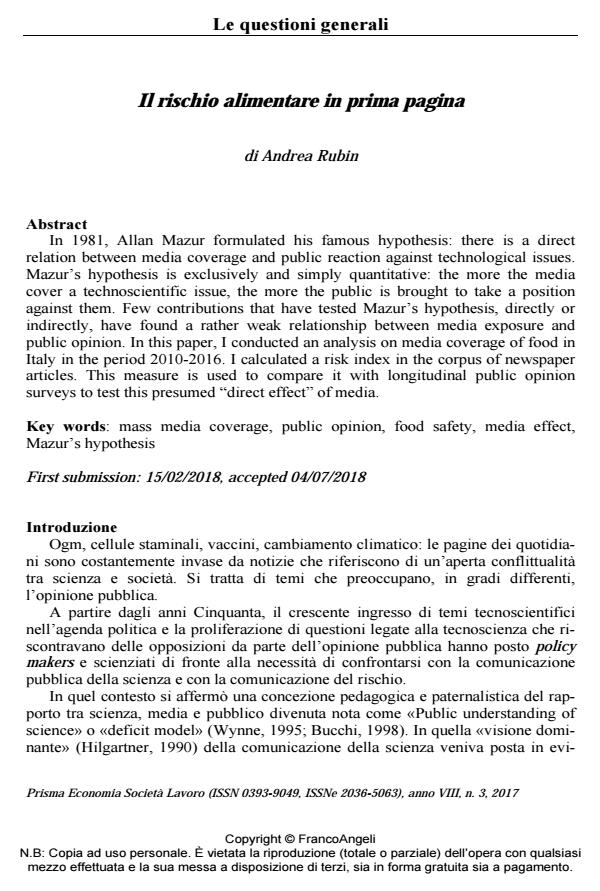Il rischio alimentare in prima pagina
Titolo Rivista PRISMA Economia - Società - Lavoro
Autori/Curatori Andrea Rubin
Anno di pubblicazione 2018 Fascicolo 2017/3
Lingua Italiano Numero pagine 20 P. 25-44 Dimensione file 278 KB
DOI 10.3280/PRI2017-003003
Il DOI è il codice a barre della proprietà intellettuale: per saperne di più
clicca qui
Qui sotto puoi vedere in anteprima la prima pagina di questo articolo.
Se questo articolo ti interessa, lo puoi acquistare (e scaricare in formato pdf) seguendo le facili indicazioni per acquistare il download credit. Acquista Download Credits per scaricare questo Articolo in formato PDF

FrancoAngeli è membro della Publishers International Linking Association, Inc (PILA)associazione indipendente e non profit per facilitare (attraverso i servizi tecnologici implementati da CrossRef.org) l’accesso degli studiosi ai contenuti digitali nelle pubblicazioni professionali e scientifiche
In 1981, Allan Mazur formulated his famous hypothesis: there is a direct relation between media coverage and public reaction against technological issues. Mazur’s hypothesis is exclusively and simply quantitative: the more the media cover a technoscientific issue, the more the public is brought to take a position against them. Few contributions that have tested Mazur’s hypothesis, directly or indirectly, have found a rather weak relationship between media exposure and public opinion. In this paper, I conducted an analysis on media coverage of food in Italy in the period 2010-2016. I calculated a risk index in the corpus of newspaper articles. This measure is used to compare it with longitudinal public opinion surveys to test this presumed "direct effect" of media.
Parole chiave:Mass media coverage, public opinion, food safety, media effect, Mazur’s hypothesis
Andrea Rubin, Il rischio alimentare in prima pagina in "PRISMA Economia - Società - Lavoro" 3/2017, pp 25-44, DOI: 10.3280/PRI2017-003003